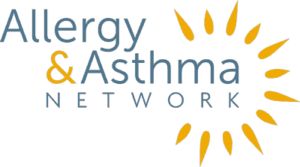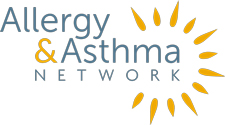
Safe Alternatives to Latex Lead to Equal Access for All
FAIRFAX, VA (AUGUST 27, 2023) – People with latex allergy know the feeling all too well. They walk into a doctor or dentist office and see a bouquet of balloons beside the receptionist’s desk. A feeling of unease and anxiety washes over them. Most balloons are made of latex. Should they stay and risk an allergic reaction? Many times they turn around and leave, or have to reschedule.
The presence of latex products can limit access to public spaces and businesses for people with latex allergy. This year’s Latex Allergy Awareness Week, Sunday, Oct. 1 to Saturday, Oct. 7, addresses “Latex Allergy: Safe Alternatives Lead to Equal Access.”
In addition to balloons, latex products can be found in medical facilities and gyms. It can be found in office and school supplies. Latex can keep people from getting essential healthcare, participating in school events or attending social occasions. It can impact their quality of life.
In most cases, latex-safe substitutions for latex products are available. These alternatives can help ensure people with latex allergy are not excluded from public spaces, retail businesses and special events.
Latex allergy is a unique health condition that affects up to 6% of the U.S. population. Exposure can occur by touching products that contain latex or breathing in airborne latex particles that come from balloons. Some reactions are mild, resulting in hives and itchy skin. Other reactions can turn serious, leading to breathing problems. It can lead to a life-threatening allergic reaction, or anaphylaxis.
The best way for people with latex allergy to prevent a reaction is to avoid latex. More than 40,000 products contain latex, so it may not be possible to completely eliminate exposure. Here are some strategies to help businesses, schools and families reduce latex in their environment.
Medical facilities
Before arriving at a doctor’s office, dentist, hospital or emergency department, notify them about your latex allergy. Tell them you need to avoid any items that contain latex.
- Ask your doctor, dentist, physician assistant and nurse to not use latex products including gloves. Request that they be removed from your examination room.
- Ask for latex equipment, such as stethoscopes and blood pressure cuffs, to be fully covered so they don’t touch your skin.
- Ask for bandages and dressings not made with natural rubber latex.
- Confirm syringes and vial stoppers do not contain latex.
- Ask the dentist or orthodontist to use braces bands made with silicone, as well as non-latex dental dams, suction tubes, goggles and masks.
Don’t forget to ask your pharmacist to not use latex gloves or equipment when filling a prescription.
Restaurants, Bars or Special Events
When you arrive at a restaurant, check to see if there are balloons on display. As you’re seated, notify the manager, host and/or server about your latex allergy. Ask that kitchen staff not use latex gloves in any part of food preparation. (If possible, call the restaurant in advance of your arrival.)
Restaurant and bar managers – as well as event planners – have alternatives to using latex balloons. Instead, consider using the following for decorations:
- Large banners or flags
- Handmade posters
- Paper chains
- Garland or bunting
- Streamers
- Paper pompoms
- Confetti
Schools
Schools should be safe environments for students with latex allergy. Latex can be present in many items commonly used in school. These include rubber bands, pen and pencil grips, erasers, duct tape, computer mouses and mouse pads, glue, paint, headphones, and goggles used in science experiments.
Parents should meet with the school nurse and the child’s teachers. It’s best to do this before the school year starts. Tell them your child has latex allergy. Provide a list of latex-free school products (PDF). Request a 504 Plan or an Individualized Education Plan (IEP) if needed. Urge teachers to not use balloons for any classroom celebrations or school events such as senior prom.
School nurses can educate teachers and school staff on latex allergy and what to do if there’s a severe reaction. Identify potential exposures to latex and remove them.
Fitness Centers and Gyms
Workout enthusiasts can speak with the management of their local fitness center or gym about latex. It may be difficult to completely eliminate latex in these facilities. But you can ask for a latex-safe space to exercise with latex-free equipment.
Items in gyms that likely contain latex include rubber balls and tennis balls, yoga mats and treadmills. The handles of tennis rackets, baseball bats and golf clubs may contain latex. If you’re going swimming, swim caps and goggles are made with latex.
Share a list of latex-free sports equipment (PDF) with gym management, as well as physical education teachers at school.
Latex Allergy Awareness Week began in 1997 with educational seminars and poster displays for allergists, hospitals and medical professionals. Interest in latex allergy has grown through the years. Many parents, children, healthcare workers, school staff and restaurant owners are eager to learn what they can do to provide a latex-safe environment.
Every year during Latex Allergy Awareness Week, Allergy & Asthma Network raises awareness about latex allergy and distributes education resources in print and online. The week highlights the many issues facing people with latex allergy and encourages them to stay vigilant in reducing or eliminating exposure to latex. With awareness and education, people with latex allergy can live a full and active life.
Allergy & Asthma Network’s digital publication, “Latex Allergy: A Practical Guide for Patients and Providers,” is available as a free download. The guide includes sections on understanding your latex allergy diagnosis, cross-reactivity, how to avoid exposure, and treatment for severe reactions.

 810304 Eaton Place, Suite 100
810304 Eaton Place, Suite 100